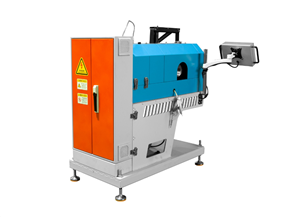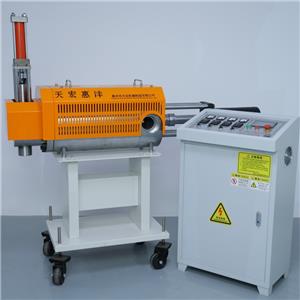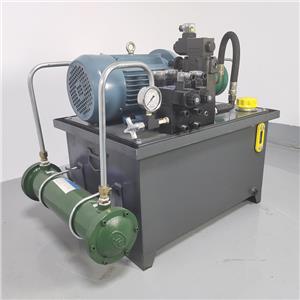Chemical Recycling of Waste Plastics: Bright Prospects Yet Less Than 1% Market Share – Industry Breakthrough Calls for Policy and Standards(2)
The mass balance method has become the mainstream choice for the certification system of chemical recycling products from waste plastics.
Fuel or chemicals can be obtained through the chemical recycling of waste plastics, which are usually certified to gain a green premium. The mass balance chain of custody method (referred to as the "mass balance method") is the core of the certification system for products derived from the chemical recycling of waste plastics.
The mass balance method includes three models: "free attribution", "fuel-free free attribution", and "proportional allocation". It can meet different legislative needs and is a core tool for enterprises to fulfill their obligations or enjoy incentives such as tax policies. Through this method, waste plastic pyrolysis oil can be processed in traditional refineries by means of blending, which can significantly reduce investment costs and rapidly promote the implementation of chemical recycling projects. This method has been introduced into Germany's REDcert2 and the EU's ISCC PLUS recycled raw material certification systems, and is being considered for adoption by more and more countries and regions.
In addition, other certification systems also encourage waste plastic-based fuels. For example, the EU Renewable Energy Directive stipulates that for liquid or gaseous products produced using waste plastics as raw materials, if their life-cycle carbon emissions reduction is not less than 70%, they can obtain compliance certification through the authorized ISCC EU certification system. The International Civil Aviation Organization's Carbon Offsetting and Reduction Scheme for International Aviation (ICAO CORSIA) stipulates that for aviation kerosene produced via the gasification route using municipal solid waste (MSW, where the content of waste plastics does not exceed 50%) as raw material, if its life-cycle carbon emissions reduction is higher than 10%, it can obtain compliance certification through authorized certification systems such as ISCC CORSIA.
The current situation of China's waste plastic chemical recycling industry
Overall, China's level of physical recycling and utilization of waste plastics ranks among the world's leading, but the chemical recycling industry of waste plastics is still in the exploration and initial stage. Although the national level has clearly encouraged the development of chemical recycling technologies for waste plastics, various details still need to be implemented, especially the infrastructure for recycling low-value waste plastics and the relevant standards and certification systems to promote the development of the chemical recycling industry, which need further development.
During the "14th Five-Year Plan" period, China has successively introduced a number of policies to encourage the development of the chemical recycling industry of waste plastics. In November 2021, the Ministry of Industry and Information Technology issued the "14th Five-Year Plan for Industrial Green Development"; in May 2022, the Ministry of Ecology and Environment issued the "Technical Specifications for Pollution Control of Waste Plastics"; in October 2023, the National Development and Reform Commission and three other departments issued the "Guiding Opinions on Promoting the Green Innovation and High-Quality Development of the Refining Industry". All the above policies clearly encourage the development of chemical recycling technologies for waste plastics. In March 2024, the National Development and Reform Commission issued the "Administrative Measures for the Special Investment in Energy Conservation and Carbon Reduction from the Central Budget", which included the construction of waste plastic sorting centers and waste plastic recycling and utilization projects in the circular economy projects that help reduce carbon emissions. These projects can enjoy certain supporting funds, which are controlled at no more than 15% of the total project investment, and the supporting funds for a single project shall not exceed 100 million yuan in principle. According to the preferential policy for enterprise value-added tax rebates of the Ministry of Finance, enterprises can enjoy tax incentives when more than 70% of the raw materials of their products come from waste plastics. A series of policies have provided favorable conditions for the development of China's chemical recycling industry of waste plastics.
At present, the total installed capacity of completed chemical recycling projects for waste plastics in China has exceeded 300,000 tons per year, and the planned or intended capacity has exceeded 1 million tons per year. Projects such as Jiangmen Chengxin, Huicheng Environmental Protection, and Jiahe Juneng have been successively put into operation, which has strengthened confidence in the development of China's chemical recycling industry for waste plastics. However, most of the commissioned capacities in China are only in the trial operation stage, lacking long-term stable operation experience and data support. At present, these projects are also faced with problems such as the lack of product standards and the inability of products to circulate freely in the market.
Whether the low-value waste plastics required for chemical recycling projects can achieve a stable supply, and whether the products can stably obtain green premiums for a long time, have also become considerations for enterprises to launch waste plastic chemical recycling projects.
The difficulties faced by China's waste plastic chemical recycling industry
From the perspective of the global development of the chemical recycling industry for waste plastics, it is still in the primary stage of industrial development. There are common issues such as policy standards needing further clarification, supplementation, and improvement, the need to establish a stable supply system for low-value waste plastic resources, and the need to further advance industrialization projects. However, compared with foreign countries and regions that have made faster progress in this industry, China still has a certain gap.
Some policies and standards still have "blind spots"
As an emerging industry, there are still some gaps in the implementation of policies and regulations related to the chemical recycling industry of waste plastics. In terms of the value-added tax refund policy, China has not yet established a unified standard for determining whether the products from chemical recycling of waste plastics are pyrolysis oil or recycled plastics; the standards for waste plastic pyrolysis oil have not been determined, making it unable to circulate in the market; waste plastic pyrolysis oil is generally processed in downstream refineries using a blending mode, with a typical blending ratio of 5% to 10%. The resulting products are mixtures with traditional petroleum-based products, which cannot be traced through existing analytical methods. Moreover, the mass balance method, which is widely used internationally, has not been implemented in China, making it difficult for the products of chemical recycling of waste plastics to meet the 70% tax refund threshold in practice.
In addition, China has not yet issued guiding documents on the direction of recycled plastic reuse. For example, products from chemical recycling of waste plastics can be fuels or chemical products, and there are no explicit regulations on which direction is specifically encouraged.
In addition, China has not yet issued guiding documents on the direction of recycled plastic reuse. For example, products from chemical recycling of waste plastics can be fuels or chemical products, and there are no explicit regulations on which direction is specifically encouraged.




